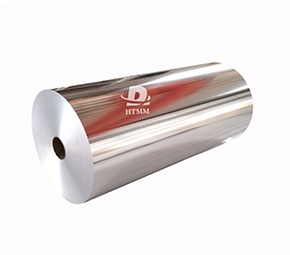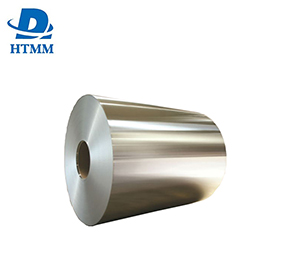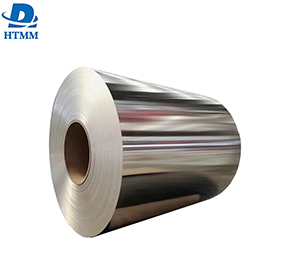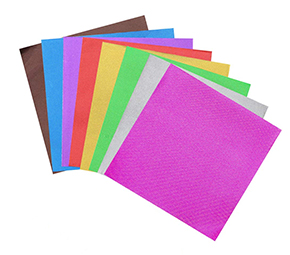6 Micron Aluminum Foil which is 1000mm wide packaging offers manufacturers ultra-thin yet high performing barrier characteristics ideal for laminating and food applications. Producing this narrow defect-free foil gauge requires advanced rolling technology including ±1°C tight temperature control and speeds up to 150m/min. However, the advantages of unlocked material savings and sustainability make 6 micron Aluminium foil well suited for high volume production requirements.
The foil, which is only aluminum foil for flexible packaging meters thick, is nearly see-through but still effectively locks in moisture, oxygen and light. This is visible through the packaging of products such as snacks and fresh or prepared foods. The 1000mm width enables efficient processing on high speed form-fill-seal lines without breaks between rolls. Operators realize increased uptime compared to changing the width of a narrow foil.
Laminating aluminum foil for flexible packaging to film or paperboarding increases the barrier capacity of the substrate used. It provides protection from external elements that may compromise the quality or shelf life of perishable products. The thin yet resilient aluminum layer performs equally well to thicker foil in standard tests such as Elmendorf tear strength and blast pressure. Repeated flexing and creasing during distribution prevents foil breakage or delamination within the multi-material construction.
Thermoforming foiling with a 6 micron aluminum layer provides optimum barrier and structure for a variety of food containers from cups to trays. Whether fresh, frozen or prepared food packaging, ultra-thin foil allows for complex structures without the risk of defects. Its recyclability meets sustainability goals for post-use recycling once the packages leave the waste stream. Overall, the high performance of the 6 micron foil at 1000 mm width makes efficient use of the material for maximum uptime in laminating and food manufacturing applications.
From candy wrapping to dry goods bags, the transparency and structureability of Aluminum foil for lamination unlocks versatile opportunities. As more brand owners commit to lighter weight and increased recycled content, ultra-thin yet fully functional aluminum becomes increasingly attractive. Advancing cold rolling efficiency can sometimes push current limits even further to meet the demanding needs of tomorrow.
The manufacturing process is precisely calibrated for 6 micron foil in this narrow thickness and wide width. Starting with high purity aluminum ingots, a multi-stage cold rolling process with 40-50 passes gradually brings the gauge down to the micron level. Strict temperature control of ±1°C throughout rolling is critical to maintaining stability at this thickness. The wider 1000mm coils require sophisticated coiling, tensioning and winding equipment to pack the layers evenly without defects during uncoiling for the downstream conversion process.
Aluminum foil for lamination onto various substrates improves moisture and gas barriers to qualify for extended shelf-life demands. It helps brands drive value through differentiation. Common lamination pairings include high-barrier specialty films, paperboard for cartonization, and polymers used in thermoforming trays and cups. Adhesive technology optimizes the bond between such dissimilar materials without the risk of delamination from flexure during distribution impact.
Formability is maximized through 1000mm widths on high-speed horizontal or vertical packaging lines. For example, thermoforming foiling with aluminum foil 0.006mm economically produces plastic clamshell containers of various sizes at rates in excess of 200 cpm. Wider foil widths support for even greater production of stand-up pouches or other flexible packages at rates in excess of 1000 ppm.
Robust recycling infrastructure allows 6 micron Aluminium foil to enter the renowned closed-loop recycling program. It supports brands’ sustainability initiatives through the use of recycled content without sacrificing functionality. The researchers further developed nanocoatings and chemical treatments to improve foil compatibility in recycling or repulping of composite substrates such as paperboard.
As the demand for ultra-lightweight yet fully functional packaging accelerates, 6 micron foil shows staying power. The production know-how constantly refines the product to satisfy these stringent specifications. Options like vacuum metallizing also expand opportunities by adding scalable high-barrier performance and printability. Overall, the 6 micron foil at 1000 mm width helps brand owners to tackle various packaging challenges now and in the future.
The ability to produce ultra-thin yet defect-free 6 micron Aluminium foil in a wide 1000mm width enables innovative packaging formats. One example is the form-fill-seal pouching of bulk powders such as protein shakes, vitamins and supplements. Previously, packaging in stand-up pouches required thick foil or film for tear strength. However, at this width, aluminum foil 0.006mm provides the high-performance barrier and structure required for blowing containers up to 5 liters in volume. Similarly, wide foiling with embedded foil enables deeply drawn cups holding foods such as yogurt that require excellent moisture and gas barriers.
Lamination applications benefit from the increased economy realized through the 1000mm unwind. Where multiple converter lines run in parallel, wider foils mean fewer roll changes and reduced non-productive time as opposed to narrower widths. This increases uptime for manufacturers. Similarly, reduced seaming in pouches or overlapping edges in other wrapped packages reduces material requirements and waste generation. Transporting and storing bulk 1000 mm wide foil coils also reduces handling costs compared to narrow foils. Overall, the wider width increases productivity and efficiency for the producer and enhances sustainability.
Advanced testing confirms that the Alu foil 6 micron maintains high barrier properties despite stresses during conversion and end use. For example, research that flex-cracked it 200,000 times to simulate distribution effects found no pinhole development. Similarly, filling the stand-up pouches with various liquids and crimping the foil lid proved no leakage. This level of durability and resilience allows manufacturers to unlock opportunities such as shelf-edge strips in retail ready trays. The 1000mm width controls high line speeds without the risk of faults that could compromise barrier performance. The resulting 6 micron foil enables innovative formats with stringent functional requirements.
The ability of Alu foil 6 micron to maintain its mechanical integrity and barrier properties in such a narrow gauge even when exposed to rigorous testing, stress and high-speed manufacturing makes it a highly versatile material for the food and pharmaceutical packaging industry. While thin enough to be almost transparent, it surpasses the performance of thicker materials. Research in surface modification technologies will further exploit its capabilities. For example, experimenting with transparent polymer and oxide-based coatings shows the potential to provide features such as grease resistance and extended shelf life without sacrificing recyclability. Such innovations could expand applications to include the manufacture of baked and fried foods in retail environments. Its 1000mm wide width also enables format growth such as new flexible lid films for clamshell containers or bulk bag liners. As manufacturing is optimized to further reduce gauges, products invade markets that require sophisticated lightweight safety configurations. Overall, the high-performance resilience of 6 micron foil at this scale positions it as an enabling element for developing advanced packaging systems.






